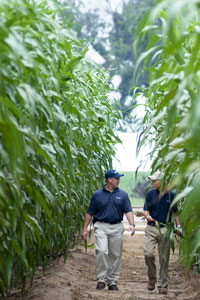The grand openings of new ethanol pumps are being celebrated Friday in two different states – one big on corn ethanol, the other not so much.
Illinois legislative officials and corn ethanol representatives will be opening the first blender pump in southern Illinois. The pump in Sullivan is the first of 20 such pumps planned in the state in a pilot program approved by the Illinois Department of Agriculture with funding from the state Department of Commerce and Economic Opportunity and the Corn Marketing Board.
 Meanwhile, out in California, Pearson Fuels will join Oak Valley Chevron to celebrate the grand opening of the first E85 fuel station in Beaumont in the San Jacinto Valley.
Meanwhile, out in California, Pearson Fuels will join Oak Valley Chevron to celebrate the grand opening of the first E85 fuel station in Beaumont in the San Jacinto Valley.
Oak Valley Chevron is part of Pearson Fuels’ statewide roll out of new E85 stations throughout California, starting with its original station in San Diego. The E85 facilities were partially funded by the California Air Resources Board.
Mike Lewis, co-owner of Pearson Fuels, said, “It is exciting for us to see the progress and interest in alternative fuel infrastructure over the last few years because we have all been recently reminded of the harm that petroleum exploration can pose to the environment and our nation’s dependence on foreign oil is the greatest challenge our children will face. Alternative fuels are always coming next year, then the year after that, but this is a real station with real alternative fuel, open to the public 24 hours a day that will displace petroleum with every gallon pumped.”
Pearson brought the first Ethanol station to the state of California when it opened its San Diego station in 2003 as the world’s first Alternative Fuel Station featuring 10 different fuels. Today it specializes in bringing alternative fuels to the public throughout California.


 Mixing enzyme cocktails and customized biofuel crops to make cellulosic ethanol a reality is the goal of a
Mixing enzyme cocktails and customized biofuel crops to make cellulosic ethanol a reality is the goal of a 




 As
As 
